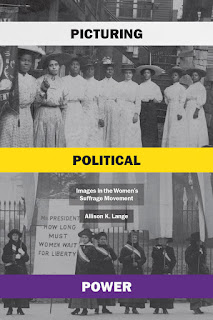 Carballo applied the “Page 99 Test” to his new book, Collision of Worlds: A Deep History of the Fall of Aztec Mexico and the Forging of New Spain, and reported the following:
Carballo applied the “Page 99 Test” to his new book, Collision of Worlds: A Deep History of the Fall of Aztec Mexico and the Forging of New Spain, and reported the following:On page 99 of Collision of Worlds I provide details on the Aztec narratives of ethnogenesis, which involved accounts of migration from Aztlan (the origins of the ethnonym) into central Mexico. I discuss the framing of Mexica-Aztec identity in particular as a blending of Toltec and Chichimec lineages. Whereas the Toltecs represented the storied urban civilizations that had existed in central Mexico for centuries before the Aztecs, the Chichimec represented the nomadic desert dwellers of arid regions to the north. The content of the page captures some of the essence of the book as a whole in that I draw on a mix of textual sources and archaeology—outlining the origins of the bow and arrow within Mesoamerica, a weapon the Aztecs associated with the Chichimecs—and mention the legendary Toltec ruler Topiltzin Quetzalcoatl, whom some authors argue Moctezuma equated Cortés with. Nevertheless, the 99 page test would apply much more satisfactorily if pagination were to include the final paragraph of page 98, which I quote here:Learn more about Collision of Worlds at the Oxford University Press website.
Regardless of the historical accuracy of these migration narratives, the framing of apparently disparate origins projected both the trappings of civilized people and the conquering spirit of barbarians. Framing ethnic identity as Toltec and Chichimec could simultaneously appeal to a sense of legitimate authority grounded in the past and a sense of restless energy of hardscrabble newcomers. It is a rags-to-riches story and would be effective for projecting political authority based on both ancient grandeur and a people not to be messed with. Similar origin narratives are familiar to us from states and empires of the West. The Roman version combined the heroic Trojan War of the Aeneid with the half-wild Remus and Romulus suckling from the she-wolf; the version in the United States combines Greco-Roman ideals of governance, rendered in neoclassical styles on the National Mall in Washington, with the humble origins of the Pilgrims and western Pioneers. We will examine Spanish national mythos later in this section.This passage captures several of the central elements of the book in that it is (1) cross-culturally comparative, (2) temporally deep, and (3) focuses on how selective historical memory framed ethnic and imperial ideologies on both sides of the Atlantic preceding and during the Spanish invasion of Mesoamerica. Previous chapters cover the deep histories of Mesoamerica and Iberia, while this explicitly comparative chapter (Chapter 4) examines the parallels and contrasts between Aztec (particularly Mexica) and Spanish (particularly Castilian) societies on the eve of their encounter. Part of the conquistador mythos drew on a Romano-Christian identity that celebrated not only the power of the Roman Empire but also resistance to it on the Iberian peninsula at sites such as the fortified Celtiberian town of Numantia, memorialized later in a tragedy by the author of Don Quixote, Miguel de Cervantes. Another drew on notions of a Christian “Reconquista” of the peninsula from Islamic forces, which was extended to Mesoamerica in conquistador accounts of the “mosques” and “minarets” of the Aztec and Maya cities they invaded. Native Mesoamerican narratives of ethnogenesis, in turn, emphasize the distinctiveness of ethnic city-states that underlay a sense of micro-patriotism in affiliation and different strategies regarding whether to resist or ally with the bearded foreigners who arrived on their shores.
--Marshal Zeringue

























